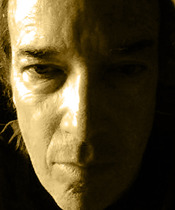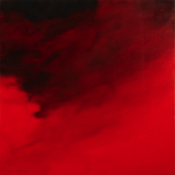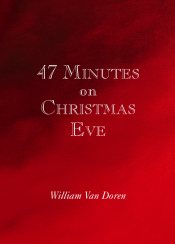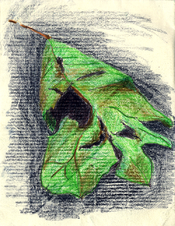 William Theodore Van Doren. Stony Point, Albemarle County, Va. Oil on paper, 16 x 20.
William Theodore Van Doren. Stony Point, Albemarle County, Va. Oil on paper, 16 x 20.
So, what’s the written equivalent of doodles?
Cat’s eye, golden, through an opening in his carrying cage, yellow.
Cat thought balloon: I’m almost 18 and doing O.K. What could they say that would make any difference?
Man thought balloon: I don’t know ... veterinary marketing ...
Elton John Christmas song (the one they always play) on the waiting room radio.
Sorry to do that to you. (Meaning you, the reader.)
I’m supposed to be writing today about Khalid Sheikh Mohammed. Now there’s something: Elton John and KSM, together again for the first time.
Client flies 757s and 767s and although, thank God, he’s not into ‘911 Truth’, he also doesn’t think al Qaeda remotely capable of what we assume they did.
Not a pleasant thought. Makes the prospect of a trial interesting indeed.
Vet waiting rooms make me edgy, much more than if it were just me in a doctor’s office.
Reading Jane Kramer in The New Yorker on preparing all kinds of Thanksgiving dinners all over the world. Very good so far, as you would expect from her, although – this may seem paradoxical – if she had to do a blog, perhaps she’d become a little less focused on the first-person singular aspect of things. (Revised from: “ ... if she had to do a blog, I think she’d become ... ”)
Blogging, one can become painfully aware of one’s self-orientation. Can’t always tell, of course, how one is doing with this on a given day.
Client’s book is here. Again, keep in mind, despite all the wacky stuff Amazon puts on the same product page (“Buy this book together with I Was the Shooter on the Grassy Knoll! by Oswald Rabbit”), the author is not in sympathy with the sad indeterminate notions of so-called ‘911 Truth’.
Got to clean brushes as soon as I get home.
Sunset tonight: supposed to get cloudy, then rain, then snow. After so many hundreds of sunsets, I have an idea what that might look like. It’s odd to think, first, I can never know what my subject will really be, and then what the painting will be, in response.
A thought: Just make it count.
The vet comes in: Dr. Richard Freedman. A prince, an archduke – no, better, a knight among vets. Makes me happy we made the trip. He loves animals. In his hands, veterinary marketing is redeemed.
On the way home, on the seat beside me, through an opening in his yellow carrying cage, a cat’s eye, golden.
 William Theodore Van Doren. Sunset from Stony Point, Albemarle County, Va. Oil on watercolor block, 16 x 20.
William Theodore Van Doren. Sunset from Stony Point, Albemarle County, Va. Oil on watercolor block, 16 x 20. Friday, January 15, 2010 at 06:30PM | by
Friday, January 15, 2010 at 06:30PM | by  BVD | in
BVD | in  Sunset Paintings | tagged
Sunset Paintings | tagged  Andy Warhol,
Andy Warhol,  Dr. Martin Luther King Jr.,
Dr. Martin Luther King Jr.,  Helen Bezilla Van Doren,
Helen Bezilla Van Doren,  Louis Menand,
Louis Menand,  MLK,
MLK,  Martin Luther King Day,
Martin Luther King Day,  The New Yorker,
The New Yorker,  Theodore Van Doren,
Theodore Van Doren,  aesthetics | | Comments Off
aesthetics | | Comments Off 










Advanced Ballistics
From The New Yorker: